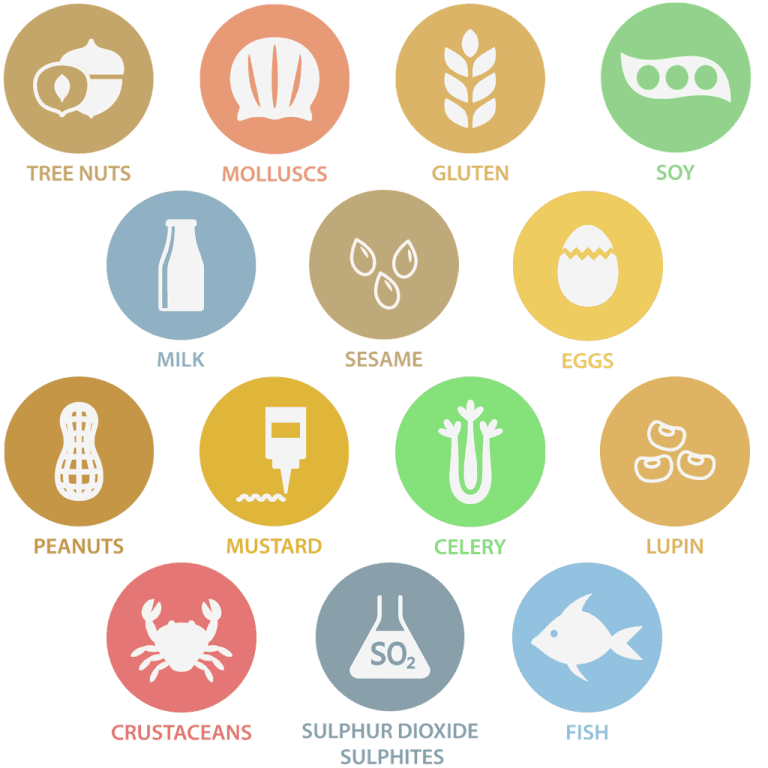
Food Safety
Allergens in our Food - Do You Know What You're Eating?
Estimates show that approximately 3% of adults and 6% of children have a food allergy. In addition, about 1 in 100 people have coeliac disease, triggered by eating gluten. Although most food allergies cause relatively mild and minor symptoms, some can cause severe reactions and may even be life-threatening.
When a food safety issue occurs due to mishandling of allergen-containing ingredients, the entire food processing industry suffers. Today, even though many developed countries have guidance documents for food allergen labelling, undeclared allergens continue to be a serious problem.
This became more evident when a teenager, Natasha Ednan-Laperouse, died after suffering an allergic reaction to sesame in a baguette she had eaten. This baguette was considered a prepacked for direct sale item, i.e., a product packaged on-site by a business before a customer selects or orders it, and was not labelled with all ingredients present. This case triggered the updated allergen guidance which become law in October 2021 in England, Wales, and Northern Ireland.
Known as Natasha's Law, this guidance requires all prepacked for direct sale (PPDS) food have a label with a list of ingredients, including allergens that may be present. In addition, any allergen present must be emphasized (such as in italics, bold, or another color) for easy visibility. Currently, foods prepared on the premises in which they are sold are not required to be labelled with a list of ingredients, causing concern for those who have food allergies and need to grab food on the go. However, starting on 1st of October, food businesses must display this information on PPDS food labels.
What does this mean for food business operators? They must declare the presence of any of the 14 major allergens listed below:
- Nuts (including almond, hazelnut, walnut, cashew, pecan, Brazil nut, pistachio and Macadamia nut (Queensland nut))
- Mollusks (including mussels, clams, oysters, scallops, snails and squid)
- Gluten (wheat, rye, barley, oats and variants/hybrids)
- Sulphur dioxide (and/or sulphites >10 mg/kg or l)
- Milk (including lactose)
- Sesame seeds
- Crustaceans
- Soybeans
- Peanuts
- Mustard
- Celery
- Lupin
- Egg
- Fish
The mandatory information must be "easily accessible, in a conspicuous place, easily visible and clearly legible". The information must be indelible and cannot be "hidden, obscured, detracted from or interrupted by other written or pictorial matter or any other intervening material."
"The use of icons or symbols to indicate the presence of allergens is permitted as long as it is accompanied by words and numbers to ensure uniform consumer understanding and to avoid misleading the consumer. Currently, there is no single agreed set of icons or symbols for indicating the presence of allergens in prepacked, non-prepacked, and prepacked for direct sale food."
Any voluntary food information listed must not mislead the consumer and cannot be ambiguous or confusing. Using precautionary allergy labelling where there is not a real risk could be considered misleading as well.
What does it mean for my business?
It is vital for food business operators to do the following:
- Make sure you provide accurate food information and label them correctly with updates to the recipe as new products are added or changed
- Start communicating thoroughly with your suppliers early to ensure the exact ingredient composition is known in every food used throughout the supply chain
- Implement allergen awareness tracking into your HACCP plan, including allergen management system and staff training on the importance of Natasha's Law and allergen awareness in general
- Perform rapid, sensitive and accurate internal quality control testing for the presence of allergens as part of your HACCP plan, by using products such as AlerTox® Sticks or GlutenTox® Pro for food testing, or AllerSnap™ for environmental surface testing, including food preparation areas.
Implementing these measures will ensure food business operators prevent future incidents and criminal prosecution while promoting safety for the consumer. Consumers will benefit as well, having confidence in what they are eating and ensured they will not have an adverse reaction to the food they select, including PPDS food.

